Snow: your questions answered
25 August 2017
Updated 16 February 2018
Powdery, soft and magical – and found in such limited areas – there's something special about snow in Australia. Our continent is the lowest, flattest and (apart from Antarctica) driest on earth. Our overseas friends might ask whether it snows here at all. But for many, snow is eagerly awaited, much welcomed and the source of lots of questions. Here are some answers!
What is snow?
Snow is a type of solid precipitation made up of ice crystals, most of which are branched or star shaped. It forms when atmospheric temperatures are low and there is moisture available in the form of tiny ice crystals.
How do snowflakes form?
Snowflakes form when ice crystals grow around pollen or dust particles. The structure and chemical properties of water mean that ice crystals tend to form hexagonal shapes. The crystals grow faster from the corners of the hexagon than from its flat sides, forming six matching arms. The shape of the arms depends on the temperature and humidity of the environment, giving each snowflake a unique shape.
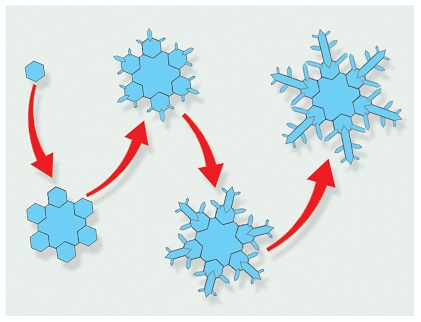
Image: The development of a snowflake
What's the difference between snow, snow showers, sleet and hail?
For snow showers, this is similar to the difference between rain and showers. Snow showers (like rain showers) occur for a short period, usually starting and ending suddenly. They typically fall from convective clouds.
Snow (like rain) falls more continuously and for a longer period, meaning there's a greater accumulation on the ground. Snow typically falls from stratiform clouds.
Sleet is a mixture of rain and snow, or falling snow that is melting into rain.
Hail and snow have obvious similarities—they're both cold and fall from clouds, and widespread small hail can look a bit like snow—but hail forms very differently. It only forms in thunderstorm (cumulonimbus) clouds, in rising air known as updraughts. So if it's snowing, it's cold. If it's hailing, there's a thunderstorm cloud around and it could be cold or hot.
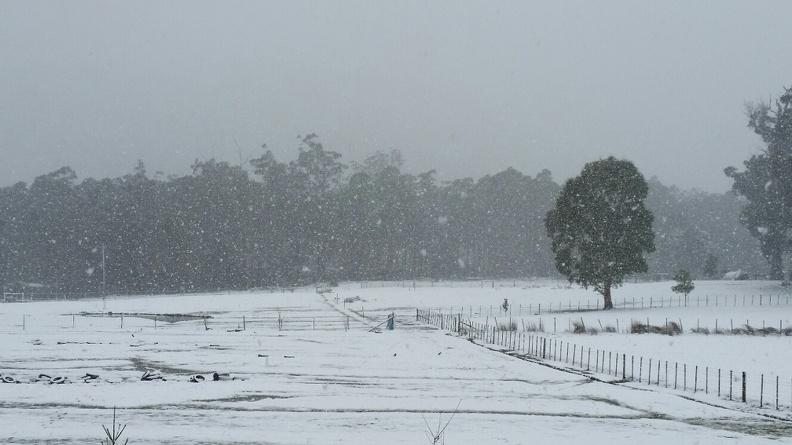
Image: Snow falling in Allens Rivulet, Tasmania
What makes a good or bad snow season?
Australia's snow season is notoriously fickle, with some years bringing deep cover and others amounts that barely cover the grass. Climate drivers play an important role, tilting the chances towards a better or worse season. For example:
- The Southern Annular Mode (SAM) influences whether snow-bearing cold fronts and low pressure systems move closer to Australia or the south pole.
- The El Niño Southern Oscillation (ENSO) and Indian Ocean Dipole (IOD) influences rainfall and temperature patterns and hence snowfall over southeastern Australia.
- Longer-term climate change and variability—maximum snow depth has declined over the past 25 years, and the season length has become shorter.
Single weather events can also make all the difference, such as the so-called Snowmageddon in 2014, which dropped around a metre of snow in less than a week.
Does the radar show snow?
Sometimes. Use the radar with caution because it can also show clear weather when it's actually snowing. Snow clouds may not show up on the radar because they are low to the ground and not detected by the radar beam overhead. Mountains may also block the radar beam so it can't detect what's happening on the other side. What you see may also be rain, or a mix of rain and snow, not just snow!
Do rain gauges measure snow?
Some of them do. The standard instrument for measuring precipitation is a rain gauge. When the precipitation is in the form of snow, the snow in the rain gauge melts and the equivalent amount of water is recorded.
However, when it snows and the temperature falls below freezing, snow in the gauge’s collecting funnel can create an icy cap and stop any melt from running into the cylinder.
We use specialised equipment in areas where snow regularly falls. Some gauges have a heating element (such as a light bulb) which helps melt the snow. A conical wind shield called a nipher shield may also be used to reduce vertical wind eddies and better capture snow falling over the gauge.
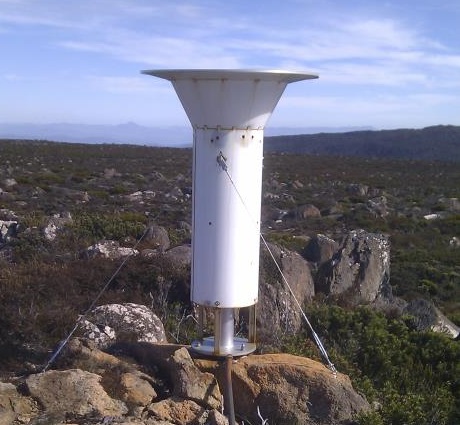
Image: Rain gauge with a nipher shield
Does the Bureau measure snow depth?
No. Snow depth is very difficult to measure because snow density varies greatly from place to place. Density will depend on the structure of the ice crystals and how they have accumulated, what shape they take and how they stack when reaching the ground.
Snowy Hydro has measured weekly snow depths at Spencer's Creek in New South Wales since 1954. Many resorts also record snow depth within their ski areas.
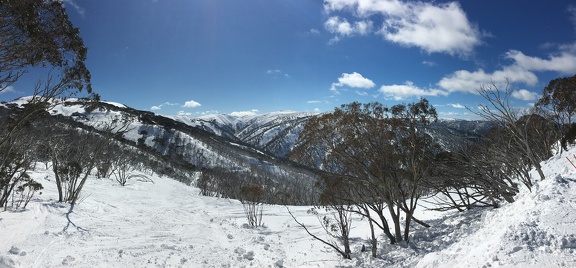
Image: Snow at Mt Hotham, Victoria, August 2017

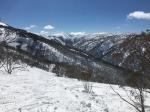

Comment. Tell us what you think of this article.
Share. Tell others.